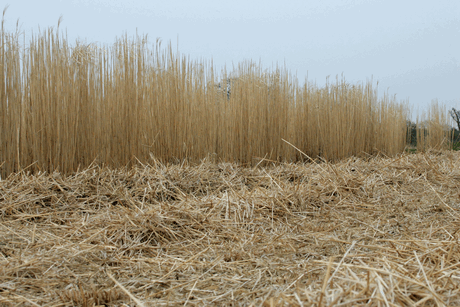Biofuels brief: Huge growth for UK biomass

The market for biomass, whether from recycled wood, processing co-products (palm kernel or distillers grains, for example), agricultural wastes (straw, chicken manure and so on) or energy crops is growing rapidly.
It is often seen as old technology, but in recent months, plans to develop more than 1,000MW of electricity generation from biomass have been announced – about the capacity of a typical nuclear power station. Add to this the increasing quantities of biomass being co-fired in large coal plants and there is a huge, and growing, market for solid biomass fuels in industrial-sized operations. Small-scale markets for biomass fuel for domestic and small industrial uses are also growing, but generally require higher-quality fuels.

Many of these large projects are backed by dedicated biomass energy specialists, such as Helius Energy. The group has already been granted consent, under Section 36 of the Electricity Act, to build a 65MW biomass plant at Stallingborough, Lincolnshire, and it announced last week that it is close to securing the rights to another site in the west of England for a similar project. Helius is also working with the Combination of Rothes Distillers to develop a 7.2MW combined heat and power scheme.
Biomass is also being embraced by traditional energy generators. As well as the ability to co-fire biomass in its coal plants, E.on has announced plans for its third dedicated biomass power station in the UK. If approved, the 150MW power station at Bristol’s Royal Portbury docks would bring its total planned biomass capacity to 219MW. It already operates the 44MW plant at Stephen’s Croft near Lockerbie and has just been awarded Section 36 consent for a 25MW plant in Sheffield.
Some people worry that the costal location of many plants means they will import all their fuel requirements. Imports will, and already do, play a significant role, but there are opportunities for domestic supplies.
Last year ScottishPower announced plans to secure 250,000t of energy crops for use in its Cockenzie and Longannet power stations, a scheme which the generator claims could see up to 35,000ha of land contracted by 2013 to produce short-rotation willow coppice and feed barley for the generator.

Drax, the UK’s largest coal-fired power plant, is also investing heavily in biomass. As well as its existing capacity to generate 100MW of power by co-firing biomass through its coal mills, it is also investing in a new facility to allow the generation of an additional 400MW of power from the direct injection of biomass. Drax is also developing a pilot project to produce pellets from locally sourced straw, which could produce about 100,000t of pellets a year.
As part of its biomass procurement plans, Drax is looking for up to 300,000t a year of miscanthus from the surrounding area. Consequently miscanthus specialist Bical needs about 20,000ha of land, although the firm’s Mike Carver stresses this will not mean wall-to-wall energy crops. “It’s actually a fraction of the land that was previously set-aside,” he says.
To secure supplies, Drax and Bical have negotiated a new contract price of £60 per oven dried tonne, with the generator paying for delivery on top of this. Bical’s figures suggest that with a 13-year index-linked contract, miscanthus could deliver an average net margin between £284 and £487/ha, compared with £124 to £279/ha for more traditional combinations of winter wheat, oilseed rape and/or beans.
The downside of miscanthus is the high establishment costs, estimated at over £2,000/ha. Establishment grants are available for 40% of this and Mr Carver says Bical has introduced a scheme for deferred payment of 43% of the first two years’ costs.
SELECTED DEDICTAED BIOMASS PLANTS IN THE | |||
Plant | Operator / Developer | Status | Capacity (Electricity) |
Slough Heat & Power | Scottish and Southern Energy | Operational | 101 MW |
Stephen’s Croft | E.ON | Operational | 44 MW |
Ely | EPR Ltd | Operational | 38 MW |
Thetford | EPR Ltd | Operational | 38 MW |
SembCorp | Operational | 30 MW | |
Glanford | EPR Ltd | Operational | 13 MW |
Eye | EPR Ltd | Operational | 12 MW |
EPR Ltd | Operational | 10 MW | |
Western Wood Energy | Western Logs Group / Eco2 | Under Construction | 14 MW |
Port Talbott | Prenergy Power | Consented | 350 MW |
Stallingborough | Helius Energy Plc | Consented | 65 MW |
E.ON | Consented | 25 MW | |
Tesco Goole | Tesco | Approved | 5 MW |
MGT power Ltd | Planned | 300 MW | |
Portbury | E.ON | Planned | 150 MW |
Kidwelly | BIO E Plc | Planned | 70 MW |
Tullis Russell, Markinch | RWE npower Cogen | Planned | 45 MW |
Sleaford Renewable | Eco2 | Planned | 40 MW |
Brigg Renewable | Eco2 | Planned | 40 MW |
CoRD Rothes | Helius Energy plc | Planned | 7 MW |
Diageo, Cameronbridge | Dalkia | Planned | tbc |
TOTAL CAPACITY | > 1,400 MW | ||

